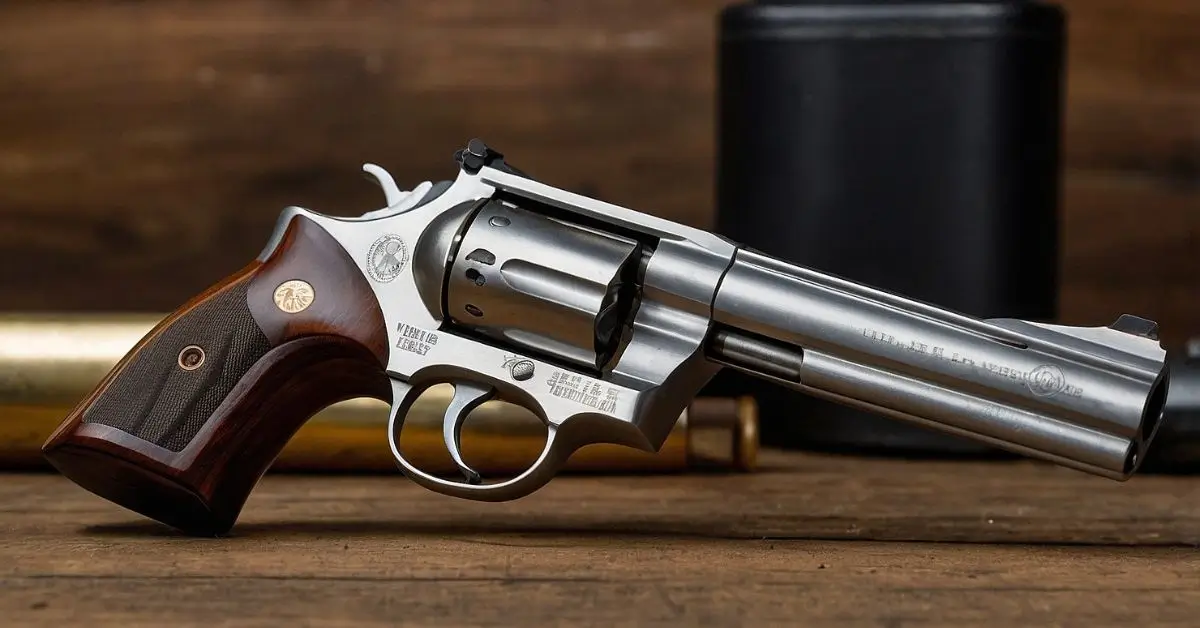Revolvers are iconic firearms known for their reliability, simplicity, and durability. However, like all mechanical devices, they require regular maintenance to ensure optimal performance. One crucial aspect of maintaining a revolver is lubrication. Proper lubrication not only prolongs the life of the gun but also ensures it functions smoothly, reducing wear and tear on the moving parts. In this guide, we’ll cover everything you need to know about how to properly lubricate a revolver, from the basics of lubrication to the specific areas of the firearm that need attention.
Why Lubrication is Important for Revolvers
Revolvers consist of numerous moving parts, all working in harmony to ensure the gun operates as intended. Over time, friction between these parts can cause wear, leading to decreased accuracy, reliability, and overall performance. Lubrication minimizes friction, preventing wear and corrosion, and ensuring the revolver functions smoothly.
Without proper lubrication, revolvers can experience several issues:
- Increased friction: This can lead to mechanical failures, making the firearm more prone to jams or misfires.
- Corrosion: Over time, moisture can lead to rust or corrosion, particularly in humid environments.
- Decreased longevity: The metal parts of the revolver can wear down more quickly if they aren’t properly lubricated, shortening the lifespan of the firearm.
Proper lubrication helps avoid these problems, keeping your revolver in optimal working condition.
Types of Lubricants
Before diving into the step-by-step guide, it’s essential to understand the different types of lubricants that can be used on firearms. The type of lubricant you choose can impact the revolver’s performance, so it’s crucial to select the right product for your firearm.
- Gun Oil
- Purpose: Gun oil is specifically designed for firearms. It’s lightweight and made to reduce friction between moving parts. Gun oils often come with additives that protect against rust and corrosion.
- Use: Apply gun oil to areas that experience frequent movement or are prone to friction. Avoid over-lubricating, as excessive oil can attract dirt and debris.
- Grease
- Purpose: Grease is thicker than oil and is often used in areas that experience significant wear, such as the revolver’s cylinder or frame. It stays in place longer than oil, making it ideal for parts that are more exposed to movement and wear.
- Use: Apply grease sparingly, as it can trap dirt or carbon buildup. It’s most useful in high-friction areas, but you should still avoid over-application.
- Dry Lubricants
- Purpose: Dry lubricants are great for revolvers that are carried in environments where dirt or sand may accumulate. These lubricants leave a thin, dry film that doesn’t attract debris.
- Use: Ideal for revolvers used in dusty or sandy environments. Dry lubricants are often used on external moving parts or in places where the accumulation of debris could cause problems.
- CLP (Cleaner, Lubricant, Protectant)
- Purpose: CLP combines the functions of cleaning, lubricating, and protecting the firearm in one product. It’s a versatile solution that can simplify maintenance but may not be as effective in each individual area compared to using specialized products.
- Use: CLP is useful for routine maintenance and quick clean-ups but may require supplementation with a dedicated lubricant in high-friction areas.
When to Lubricate Your Revolver
The frequency of lubrication depends on how often you use your revolver. A revolver that is used frequently will require more maintenance than one that sits in a safe for long periods. Below are general guidelines:
- After every shooting session: Even if you only fire a few rounds, clean and lubricate the revolver after each use. Gunpowder residue, dirt, and other debris can accumulate quickly.
- Before storing for long periods: If you won’t be using the revolver for an extended period, ensure it is well-lubricated, especially in areas prone to rust. Use a slightly heavier oil or grease for long-term storage.
- If exposed to moisture or harsh conditions: Humidity, rain, or saltwater can accelerate corrosion. Lubricate the revolver more frequently if it’s exposed to these conditions.
How to Lubricate a Revolver: Step-by-Step Guide
Step 1: Safety First
Before beginning any maintenance on your revolver, ensure it is unloaded. Open the cylinder and visually inspect the chambers to confirm that no rounds are present. Always follow basic firearm safety protocols to prevent accidents.
Step 2: Disassemble the Revolver
You don’t need to fully disassemble the revolver for basic lubrication. However, breaking it down into its main components will allow for more thorough cleaning and lubrication. Most revolvers are easy to partially disassemble, with the cylinder, ejector rod, and grip being accessible without too much hassle.
- Cylinder: The cylinder is a high-friction area that requires attention during lubrication.
- Ejector Rod: The ejector rod should be cleaned and lubricated to ensure smooth ejection of spent cartridges.
- Frame: Wipe down the frame and ensure all external moving parts are clean and lubricated.
Step 3: Clean the Revolver
Before lubricating, clean the revolver to remove dirt, carbon, and gunpowder residue. Use a gun-specific cleaning solvent and a cleaning brush to scrub areas prone to buildup, such as the barrel, cylinder, and frame.
- Barrel: Run a cleaning rod with a brush attachment through the barrel to remove any fouling. Follow this with a patch soaked in solvent.
- Cylinder: Clean the chambers with a brush and solvent. Don’t forget to clean the ejector rod and star extractor.
- Frame and External Parts: Wipe down the frame and all external parts using a solvent-soaked cloth.
Step 4: Dry the Revolver
After cleaning, wipe down all parts with a dry, lint-free cloth to remove any remaining solvent or moisture. Ensure the revolver is completely dry before applying lubricant, as any leftover moisture can lead to corrosion.
Step 5: Apply Lubricant to Key Areas
Now that the revolver is clean and dry, you can begin the lubrication process. It’s important not to over-lubricate; too much oil or grease can attract dirt and create a gummy buildup that interferes with the gun’s function.
- Cylinder and Crane
- Apply a small amount of gun oil to the cylinder’s rotating surfaces, particularly the base where the cylinder meets the frame. This area experiences friction every time the cylinder rotates.
- Lubricate the crane (the part that swings the cylinder out) lightly. Too much lubrication here can cause dirt buildup, so a small drop of oil is sufficient.
- Ejector Rod and Star Extractor
- The ejector rod and star extractor should be lightly lubricated to ensure smooth ejection of spent cartridges. Apply a small amount of oil to these parts and work them back and forth to distribute the lubricant.
- Trigger and Hammer Mechanism
- Apply a light coat of oil to the trigger and hammer mechanism. Use a fine applicator or needle oiler to reach these small areas. Be cautious not to over-lubricate the internal parts, as this can attract debris.
- Barrel and Forcing Cone
- Lubricate the forcing cone (the part of the barrel where the bullet enters) with a small amount of oil. This area experiences high friction as the bullet transitions from the cylinder into the barrel.
- Use a lightly oiled patch to run through the barrel to provide a thin protective layer inside.
- External Metal Surfaces
- Wipe down the external surfaces of the revolver with a cloth lightly moistened with oil. This will protect the metal from moisture and rust without leaving too much residue.
Step 6: Reassemble and Function Check
Once you’ve finished lubricating, reassemble the revolver and perform a function check. Ensure the cylinder rotates smoothly, the ejector rod functions correctly, and the trigger and hammer operate without any resistance. Wipe away any excess lubricant to prevent buildup or attraction of dirt.
Step 7: Store Properly
If you plan on storing the revolver for an extended period, give it one final wipe-down with an oil-moistened cloth to protect against rust. Store the revolver in a cool, dry place, preferably in a gun case with a moisture barrier.
Common Lubrication Mistakes to Avoid
- Over-lubrication: One of the most common mistakes is using too much lubricant. Excessive oil or grease can attract dirt, dust, and carbon buildup, which can impede the revolver’s function.
- Using the Wrong Lubricant: Not all lubricants are suitable for firearms. Avoid household oils like WD-40, which can gum up or leave residues that are difficult to clean.
- Neglecting Key Areas: Make sure you don’t forget to lubricate areas that experience high friction, such as the cylinder and crane. Neglecting these areas can lead to malfunctions.
- Inconsistent Maintenance: Revolvers need regular care. Don’t neglect routine lubrication and cleaning, especially after heavy use or exposure to harsh conditions.
Conclusion
Proper lubrication is essential for maintaining the performance and longevity of your revolver. By using the right lubricants and focusing on the key areas of the gun, you can ensure that your revolver operates smoothly and reliably for years to come. Follow the steps outlined in this guide, and remember that consistency is key. Regular maintenance, cleaning, and lubrication will keep your revolver in top condition, whether it’s a daily carry firearm or a prized part of your collection.











